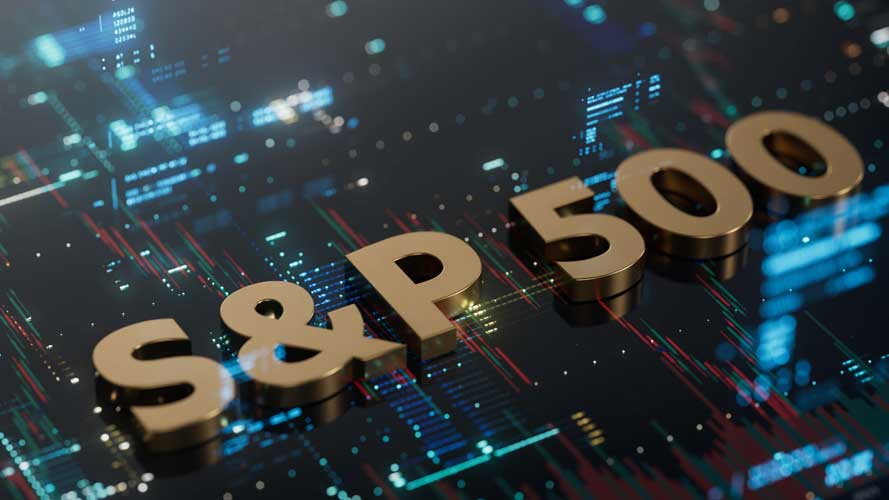Introduction
S&P 500 futures remain one of the most important and actively traded instruments in the global financial markets. As we enter 2025, the role of S&P 500 futures has only grown, offering traders and institutions a flexible, leveraged, and nearly 24-hour tool to speculate on or hedge exposure to the benchmark U.S. equity index.
From E-mini and Micro E-mini S&P 500 futures to institutional SPX-related strategies, this guide offers a deep dive into how traders can navigate this dynamic product in 2025. Whether you’re managing risk, building exposure, or seeking opportunity in volatile conditions, understanding S&P 500 futures is essential.
What Are S&P 500 Futures?
S&P 500 futures are standardized contracts that allow market participants to buy or sell the future value of the S&P 500 index. Traded on the CME Group’s Globex platform, these contracts offer a high degree of liquidity, low transaction costs, and (for U.S. traders) potential 60/40 tax treatment.
The S&P 500 represents 500 large U.S. companies across 11 sectors. S&P 500 futures are used by:
- Traders seeking short-term directional exposure
- Institutions hedging large equity portfolios
- Algorithmic firms executing high-speed strategies
- Asset managers rebalancing positions
Types of S&P 500 Futures
| Contract | Symbol | Size | Tick Size | Tick Value |
|---|---|---|---|---|
| E-mini S&P 500 Futures | ES | $50 × index price | 0.25 | $12.50 |
| Micro E-mini S&P 500 | MES | $5 × index price | 0.25 | $1.25 |
E-mini S&P 500 Futures (ES)
The world’s most traded equity index futures: high liquidity, leverage, and scalability for institutional and professional retail traders.
Micro E-mini S&P 500 Futures (MES)
One-tenth the size of ES, designed for accessibility and finer position sizing—popular among active retail traders and small managers.
Why Trade S&P 500 Futures in 2025?
- High Liquidity – Deep books and tight spreads across sessions.
- Exposure to the U.S. Economy – Immediate access to a broad market proxy.
- Leverage & Capital Efficiency – Control large notional with a fraction of capital.
- Nearly 24-Hour Access – React to global events in real time.
Trader Personas
Contract Specs & Margin in 2025
| Contract | Multiplier | Tick Value | Initial Margin | Maintenance Margin |
|---|---|---|---|---|
| ES | $50 | $12.50 | ~$12,000 | ~$10,500 |
| MES | $5 | $1.25 | ~$1,200 | ~$1,000 |
Note: Margins vary by broker and may rise in volatile periods.
Trading Hours
- Globex Open: Sunday 6:00 PM ET
- Globex Close: Friday 5:00 PM ET
- Maintenance Break: 5:00–6:00 PM ET daily
The most liquid window is the U.S. cash session overlap (9:30 AM–4:00 PM ET).
Leverage Example
If the S&P 500 index is at 4,800:
- One ES ≈ $240,000 exposure
- One MES ≈ $24,000 exposure
- With $12,000 margin on ES → leverage ≈ 20:1
Trading Strategies for S&P 500 Futures
🔁 EMA Trend Following
- 20/50 EMA crossover on 15m/1H; confirm with ADX > 25 or MACD.
- Stop below swing low.
🔄 Mean Reversion
- Long at lower Bollinger + RSI < 30.
- Exit at VWAP or mid-band.
⚡ News Breakout Strategy
- Trade CPI, FOMC, NFP.
- Wait for volume confirmation.
- Stop-loss ≈ 1% below entry.
📈 Fibonacci Pullback Scalping
- Identify trend on 1H; enter at 38.2% or 61.8% pullback.
- Confirm with a candlestick pattern.
💡 Multi-Timeframe Confirmation
- Daily = trend; 1H = confirmation; 5m = entry.
Broker & Platform Comparison
| Broker/Platform | Best For | Strengths |
|---|---|---|
| StoneX | Institutional & Pro | Clearing, liquidity depth |
| Edgeclear | Active Traders | Low commissions, tailored support |
| Interactive Brokers | Professional Multi-Asset | Global futures, portfolio margin |
| NinjaTrader | Strategy Execution | Automation, backtesting |
| AMP Global | Retail Traders | Competitive pricing, fast routing |
Note: “Commission-free” venues may add costs or lack pro-grade tools; the above list prioritizes reliable execution and scale.
Sample Trade Setup
| Bias | Bullish post-CPI |
|---|---|
| Index | 4,750 |
| Instrument | MES |
| Entry | 4,755 |
| Stop | 4,730 |
| Target | 4,795 |
| Risk | 25 pts × $5 = $125 |
| Reward | 40 pts × $5 = $200 |
| R:R | 1.6:1 |
| Strategy | 20 EMA bounce + MACD divergence |
Next Step
Compare leading futures brokers and platforms for your strategy and risk profile.
Explore ReviewsGlossary
- S&P 500 Futures
- Contracts tracking index performance.
- E-mini (ES)
- Standard contracts with $50 multiplier.
- Micro E-mini (MES)
- Smaller contract with $5 multiplier.
- Tick Value
- Monetary value of the smallest price move.
- Rollover
- Shifting to the next active contract month.
- Margin
- Capital required to open/maintain positions.
- Leverage
- Controlling more exposure with less capital.
- VWAP
- Volume Weighted Average Price.
- DOM
- Depth of Market order book.
- Backtesting
- Testing strategies on historical data.
Common Mistakes
- Confusing ES with MES and oversizing.
- Ignoring macro events (NFP, Fed policy).
- Trading during thin liquidity (post-4 PM ET).
- Using maximum leverage without stops.
- Poor rollover timing/management.
Conclusion
S&P 500 futures remain a cornerstone market. In 2025, with macro uncertainty, policy shifts, and sector rotation, success demands disciplined execution, clear strategy, and the right platform.
Whether you’re hedging with ES or scaling with MES, a robust playbook beats ad-hoc trades every time.
Start your journey at bestfuturestradingplatform.com/sp500-futures-guide.

